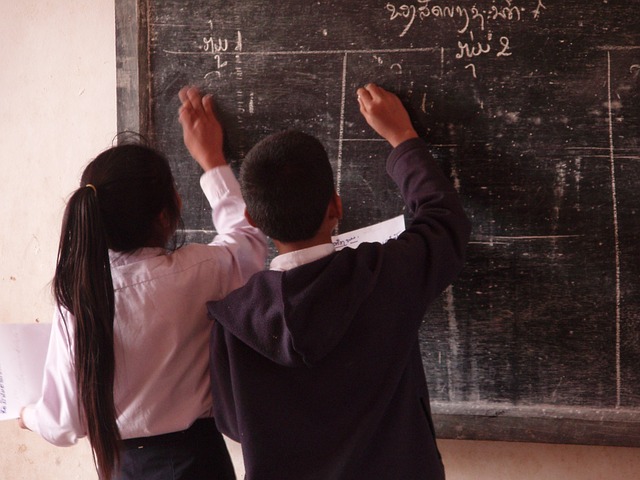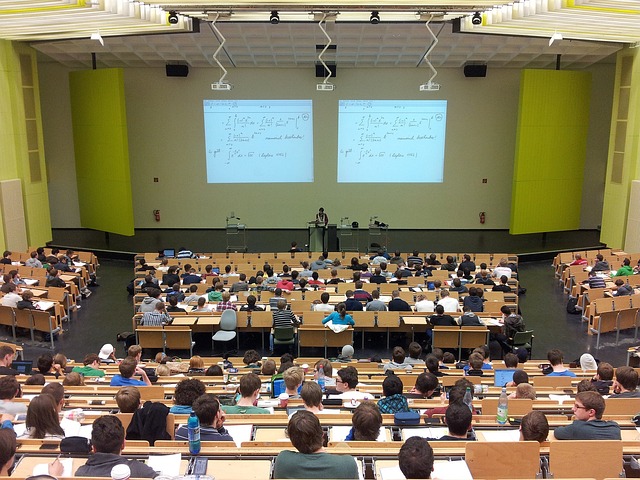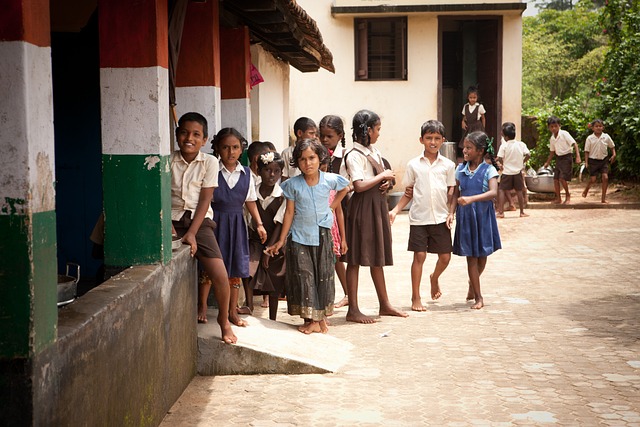India’s National Education Policy (NEP) 2020 has already laid ambitious groundwork by emphasizing foundational literacy, inclusivity, and digital transformation.

The year 2025 is poised to become a landmark for education policy and governance globally, especially in India, where education systems are undergoing significant reform.
With advancing technology, changing workforce demands, and diverse societal needs, education policy must evolve to remain relevant and effective.
India’s National Education Policy (NEP) 2020 has already laid ambitious groundwork by emphasizing foundational literacy, inclusivity, and digital transformation. By 2025, the objectives outlined in NEP are expected to mature, reshaping the nation’s educational landscape.
Globally, the emphasis on education governance is also intensifying, with a strong focus on accountability, data-driven decision-making, and inclusive policies that address socioeconomic and cultural diversity.
As countries adopt AI, big data, and immersive learning technologies, educational experiences are becoming more personalized and accessible.
For India, where nearly 240 million students rely on the education system to shape their futures, these changes present a unique opportunity to bridge learning gaps, enhance employability, and foster a culture of lifelong learning.
1. Technological Advancements: AI, Machine Learning, and Beyond
By 2025, advancements in artificial intelligence (AI) and machine learning are set to transform how education is delivered and governed, particularly in India.

AI-powered tools have already begun reshaping personalized learning, providing students with tailored resources and adaptive assessments that enhance engagement and understanding.
With technologies like AI and big data analytics, educators can identify student strengths, weaknesses, and learning patterns to deliver customized support, effectively transforming the traditional one-size-fits-all model.
India has seen an early adoption of AI in higher education, where institutions use it to streamline administrative processes and analyze performance metrics. By 2025, AI will permeate primary and secondary education, offering insights to guide data-driven policy and resource allocation decisions.
Policymakers can leverage these insights to identify learning gaps, improve curriculum relevance, and allocate resources to underserved regions, making education more equitable.
For example, NEP 2020 advocates for the use of technology in education, emphasizing digital tools and platforms to bridge regional and language barriers.
As AI evolves, it will likely support NEP’s inclusivity goals, bringing quality education to all students, including those in rural or marginalized communities, helping create a more resilient and accessible education system across India.
2. Immersive Learning: The Role of Virtual and Augmented Reality
Virtual and augmented reality (VR and AR) are redefining learning experiences by making education more engaging and accessible. VR and AR allow students to participate in immersive learning environments, whether it’s exploring historical sites virtually or performing complex scientific experiments safely.

For India, where education access varies widely, these technologies offer a valuable means to overcome geographical and resource limitations.
By 2025, immersive learning is expected to support India’s education goals, particularly in areas lacking access to high-quality resources and hands-on learning. Pilot programs in Karnataka and Andhra Pradesh have shown that VR improves retention and engagement, even for students in underserved areas.
Immersive technologies align well with NEP 2020’s objectives of enhancing student comprehension through experiential learning, especially in rural schools where resources are scarce.
Additionally, VR and AR applications have great potential in higher education and vocational training. Medical, engineering, and architectural students can gain hands-on experience through simulations, which allow safe, repeatable practice scenarios.
In rural or resource-constrained schools, VR could democratize education, making specialized content and practical knowledge accessible. By supporting experiential learning, VR and AR contribute to closing India’s education gap, enhancing curriculum flexibility, and building a future-ready workforce.
3. Big Data and Policy-Making: Informing Governance with Data-Driven Insights
Data-driven governance has become essential to modern education policy, allowing policymakers to make informed, targeted decisions that optimize educational resources and improve outcomes.

Big data analytics is anticipated to play a transformative role in India by 2025, offering insights into student performance, attendance trends, and teacher efficacy.
With over 1.5 million schools in India and a diverse population of students, these data insights can help identify specific needs across regions, socioeconomic backgrounds, and skill levels.
For instance, big data allows policymakers to track literacy rates and learning progress in real time, aligning with NEP 2020’s goals to achieve foundational literacy and numeracy by 2025.
Such insights can inform government initiatives to distribute resources to regions or communities where students struggle with these skills, ensuring no area is left behind.
Data insights also aid in curriculum and teacher development, enabling state governments and education boards to tailor professional development for teachers based on actual classroom needs.
With big data, policymakers can make targeted investments in areas like teacher training, infrastructure, and curriculum design, all of which contribute to a more efficient and responsive education system.
In India, data-informed governance will optimize education policies, making them more inclusive and outcome-oriented.
4. Addressing Workforce Needs: Preparing Students for a Dynamic Job Market
The job market is evolving rapidly, with new roles emerging in artificial intelligence, renewable energy, and data science, among others. The World Economic Forum projects that automation will displace over 85 million jobs by 2025, increasing the demand for skills like digital literacy, problem-solving, and critical thinking.

This global shift underscores the need for education policies that focus on employability, equipping students with skills aligned with future job market demands.
In India, the NEP 2020 has prioritized vocational training and skill development, aiming to integrate industry-relevant courses starting from middle school.
By 2025, students will have access to practical learning experiences through partnerships between educational institutions and industry, enabling them to acquire both academic knowledge and job-ready skills.
Many universities in India have already partnered with tech companies to offer courses in areas like data science, robotics, and digital marketing.
These initiatives aim to bridge the employability gap, ensuring that students graduate with relevant skills. By creating a workforce equipped for the demands of tomorrow, India’s education policy aims to make higher education more adaptive and aligned with economic trends, ultimately supporting the nation’s growth and development.
5. Inclusive Education for Diverse Student Populations
India’s diverse population brings with it unique educational challenges and opportunities. As student demographics shift, education policies must cater to a wider array of needs, from linguistic and cultural diversity to learning disabilities.

By 2025, inclusivity in education will become a core focus of policy reforms, enabling a system that supports students from all backgrounds, as emphasized in NEP 2020.
One significant area of development is curriculum diversity, which NEP 2020 addresses through a multi-language policy that encourages learning in local languages. By supporting regional languages, India’s education policy seeks to provide culturally relevant instruction, fostering a deeper connection to learning.
Specialized programs and support services will also expand for students with disabilities and those from economically disadvantaged backgrounds. Already, many Indian schools are implementing inclusive teaching methods and resource support to create an environment where all students can thrive.
By prioritizing inclusivity, India’s education policy hopes to eliminate disparities, creating equal learning opportunities that empower students from every community and socioeconomic background.
6. Accountability, Transparency, and Governance Reforms
Governments around the world are focusing on increasing accountability and transparency within their education systems, ensuring that policies meet standards of quality and effectiveness.

By 2025, these governance reforms will reach new heights as India and other countries implement frameworks to track educational outcomes more rigorously.
In India, NEP 2020 has introduced multiple accountability measures, such as public performance reporting and regular assessments, to help gauge institutional success.
Schools and universities will uphold higher standards, making results in areas like student progress, graduation rates, and teaching quality accessible to the public.
These measures aim to create a more transparent education system where parents, students, and stakeholders have a clear view of institutional performance.
Policymakers can use this data to address inefficiencies, redirecting resources to areas that need improvements most. Increased accountability also builds trust, ensuring that families feel confident in the quality of education their children receive.
As governance reforms take shape, they promise to strengthen the foundation of India’s education system, making it more reliable, transparent, and accountable.
7. Empowering Teachers through Professional Development
Teachers are the backbone of the education system, and by 2025, empowering them through continuous professional development will become a priority.

In India, where diverse classroom environments demand a range of teaching approaches, the NEP 2020 emphasizes teacher training, aiming to improve their skill sets in digital tools, culturally responsive teaching, and modern pedagogy.
Teacher surveys conducted by NCERT reveal a pressing need for skill-building programs, particularly in digital competencies. By providing teachers with ongoing training in these areas, India aims to ensure that they can adapt to dynamic classroom demands, from digital classrooms to culturally diverse students.
Moreover, teacher efficacy is set to improve through mentoring programs, career advancement opportunities, and access to digital resources.
Teacher professional development not only benefits educators but also translates to improved student outcomes. As teachers grow more adept at utilizing technology, understanding data insights, and managing diverse classrooms, they can better support student needs.
By investing in teacher training, India is building a skilled educator workforce that can deliver quality education, enhancing the effectiveness of the NEP and the overall education system.
8. School Choice and Parental Involvement: A New Focus on Parental Rights
Parents play a crucial role in shaping educational experiences, and by 2025, school choice and parental involvement will likely expand, especially as more parents seek personalized learning options for their children.

Globally, there’s a trend toward policies that offer parents more flexibility through school choice options like charter schools, home-schooling, and school vouchers.
In India, where private education already plays a prominent role, NEP 2020 aligns with this trend by encouraging greater parental involvement.
However, increased school choice must be balanced with equitable access to ensure that all children benefit from quality education, regardless of background. The challenge lies in creating policies that promote flexibility without compromising equity.
Expanding parental involvement can lead to a more engaged learning community where families contribute to educational goals. Schools and policymakers will need to ensure that choice and flexibility remain inclusive, providing parents with options while fostering equal opportunities for every child.
The goal is to empower parents without widening educational disparities, supporting a collaborative approach to educational development.
9. Global Influences and International Cooperation
As the world becomes increasingly interconnected, global organizations like UNESCO and OECD continue to shape education policy, setting standards that encourage international collaboration.

By 2025, international frameworks will influence national education policies, especially in countries like India that are actively working toward education reform through NEP 2020.
UNESCO’s Sustainable Development Goals (SDG), particularly SDG 4, emphasize inclusive and equitable quality education. India’s policy initiatives align with these global standards, especially in efforts to increase literacy and digital access.
The OECD’s Education 2030 project also encourages nations to adopt curricula that promote critical thinking, problem-solving, and collaboration.
India’s focus on aligning its policies with international standards reflects a commitment to prepare its students for a globalized workforce. By integrating global best practices, India’s education policy strengthens its position in the international community, ensuring that its students can compete on a global scale.
These efforts toward international cooperation support a shared goal: building an education system that meets the demands of a rapidly changing world.
Conclusion: The Future of Education Policy Beyond 2025
As 2025 approaches, education policy and governance are set to reach new milestones. For India, NEP 2020’s ambitious goals will mature, transforming the nation’s education system to be more inclusive, adaptive, and aligned with global standards.
With these advancements, a system that serves as a model of access, equity, and quality is within reach.
Yet, these innovations bring new questions. How will policymakers ensure that technology and inclusivity initiatives create equal opportunities for all?
And what steps will be taken to balance parental choice with educational equity?
The answers to these questions will shape the trajectory of education well beyond 2025, influencing not only India but the future of global education policy as a whole.



Pingback: The Future of AI in Education Marketing: Stay Ahead in 2025
Pingback: What Higher Education Marketing Will Look Like in 2025?
Pingback: How Universities Are Using Marketing to Shape Future of Education
Pingback: Vocational Training: India’s Missing Link to Manufacturing Growth